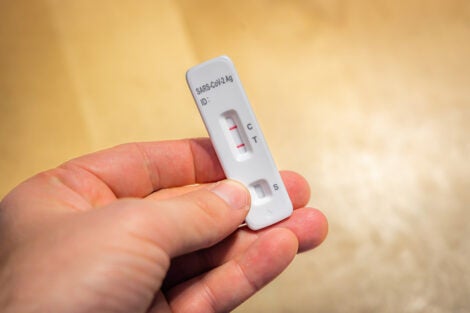September 20, 2024—Monitoring wastewater for SARS-CoV-2 concentrations at a neighborhood level—rather than only at the state or national level—may allow health officials to better understand the spread of COVID-19 and guide more equitable public health interventions, according to a new study by Harvard T.H. Chan School of Public Health and the Boston Public Health Commission (BPHC).
The study was published September 10 in The Journal of Public Health Management & Practice. Tori Cowger, research associate at the François-Xavier Bagnoud (FXB) Center for Health and Human Rights at Harvard University, was corresponding author.
Existing methods for measuring SARS-CoV-2 in wastewater—for example, those used by the Centers for Disease Control and Prevention (CDC)—focus on national and state levels. Seeking more granular data, the researchers developed a new methodology to monitor and communicate viral levels in wastewater on a neighborhood level. They applied that methodology to wastewater data collected by BPHC across 11 sites in Boston, spanning neighborhoods with different sociodemographic and socioeconomic characteristics.
One of the study’s findings was that adapting the CDC’s methodology in measuring viral wastewater levels resulted in underestimating the COVID-19 burden in nearly half of the neighborhoods examined. Further, that underestimation occurred mostly in neighborhoods that have faced the greatest burden of COVID morbidity and mortality, have higher prevalence of crowded housing conditions and precarious working conditions, and have greater reliance on public transportation.
According to the researchers, the study underscores the importance of hyperlocal wastewater-based epidemiology. They called for standardized methods at the neighborhood scale to guide local public health intervention efforts—including testing, vaccinations, and treatment—especially to benefit areas with high social vulnerability.
Harvard Chan School’s Ruchita Balasubramanian, Soroush Moallef, Nicholas Link, Mary Bassett, Bill Hanage, Jarvis Chen, and Nancy Krieger were also co-authors.
Read the study: Visualizing Neighborhood COVID-19 Levels, Trends, and Inequities in Wastewater: An Equity-Centered Approach and Comparison to CDC Methods
Photo: iStock/Jean-Luc Ichard
